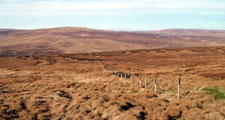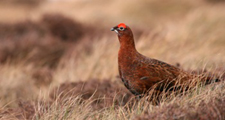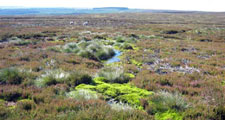Moors and Heaths
Much of the west of the county is covered by moorland. Blanket bog of heather, cotton grass, and Sphagnum mosses dominates the higher ridges, summits and plateaux. This gives way to heath of heather and bilberry and acid grassland on drier ridges in the east.
The North Pennine Moors are notable for their populations of birds such as red grouse, black grouse, merlin, peregrine and golden plover and large areas are designated as a Special Protection Area. Large tracts of open moorland are designated as Common Land. Fragments of lowland heath survive in the lowlands and upland fringes of the coal measures of thin acidic soils
Further Information
- The County Durham Landscape Strategy for Moors and Heaths.
- Special Protection and Conservation Areas.



